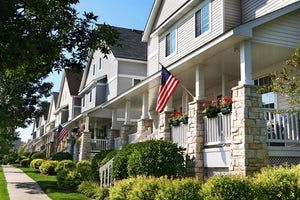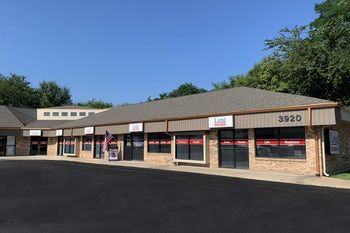High winds are a danger to people and property. Learning what to look for and how to properly prepare can save lives and minimize damage.
WIND CHARACTERISTICS
Wind damage can come from wind alone or from severe weather events, such as thunderstorms and tornadoes. Damaging winds that are not associated with tornadoes are often called “straight line” winds; they are often caused by strong thunderstorms. Damaging winds are defined as exceeding 50-60 mph; they can reach up to 100 mph, can produce a damage path extending for hundreds of miles and are more common than tornado damage. Anyone residing in thunderstorm-prone areas is at risk of this hazard. Structures of lesser construction, such as unbraced frame buildings and mobile homes, are at greater risk.
TORNADO CHARACTERISTICS
A tornado is a narrow, violently rotating column of air that extends from the base of a thunderstorm to the ground. Characterized by a long, funnel-shaped cloud that is made visible by condensation and debris, roughly 1,200 tornadoes hit the U.S. every year. Peak tornado season for the southern plains runs May into early June; on the Gulf Coast, it is earlier in the spring; and in the northern plains and upper midwest, tornado season is June and July. Tornado strength is rated on the Enhanced Fujita Scale, with ratings from EF1 to EF5.
TORNADO ALERTS
Two different alerts warn of impending tornadic activity:
- Tornado Watch: A watch is issued by the NOAA Storm Prediction Center. A watch means that weather conditions are favorable for tornadoes. A watch can cover parts of a state or several states; it indicates that one should watch or prepare for severe weather and stay tuned to the radio for a warning.
- Tornado Warning: A warning is issued by the local NOAA National Weather Service Forecast Office. A warning means a tornado has been reported by spotters or indicated by radar and there is a serious threat to life and property to those in the path of the tornado. A warning should heed immediate action to find safe shelter.
WIND SAFETY
Being prepared prior to a high wind event as well as knowing what actions to take during and after a thunderstorm can be the difference between life and death. Consider the National Weather Service’s following safety tips for both places of business and your home.
Before a high wind event or tornado:
- Trim tree branches away from your building and power lines.
- Secure loose gutters and shutters.
- Identify an interior room or area of refuge – such as bathrooms or basements – that can be used as a safe room of shelter during high wind warnings.
- Consider having emergency supplies available, including medical supplies, water and food in the event your building cannot be evacuated.
- Establish an emergency action plan to address all potential catastrophic weather events including high wind storms and tornadoes. This should include an emergency meeting place or room, a method of taking attendance, notification methods and drills.
During a high wind event or tornado:
- Go to your predesignated area of refuge – an interior area, such as a bathroom or basement – for shelter.
- Stay away from glass and windows that could be hazardous if broken during the storm.
- Tune to a trusted weather source for updates on storm conditions and location, so you know when you can safely leave your safe area.
After a high wind event or tornado:
- Do not go near downed power lines. Report them to police and avoid them until a professional has evaluated them and deemed the area safe.
- Be careful when handling debris that may have blown on your property.
- Wear long pants, long sleeved shirts and sturdy shoes when assessing damage. If possible, stay out of damaged buildings until authorities have deemed it safe.
This loss control information is advisory only. The author assumes no responsibility for management or control of loss control activities. Not all exposures are identified in this article. Contact your local, independent insurance agent for coverage advice and policy service.
Coverages described here are in the most general terms and are subject to actual policy conditions and exclusions. For actual coverage wording, conditions and exclusions, refer to the policy or contact your independent agent.
This article was originally posted on the Cincinnati Insurance Companies website: view the article here.
For questions or concerns regarding your insurance, please contact Lang Insurance at (636) 229-7000.










